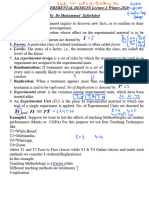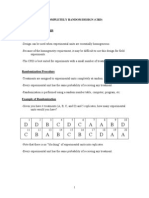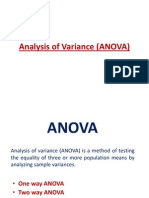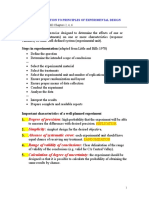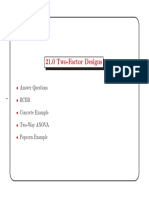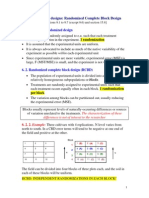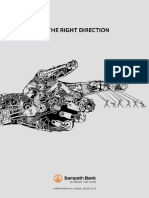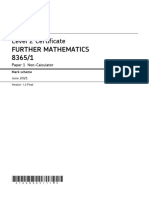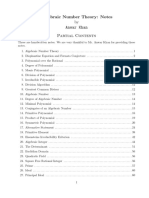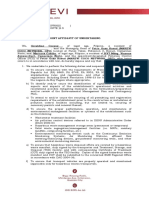0% found this document useful (0 votes)
26 views35 pagesSTATISTICS Lecture Note 2
This document provides lecture notes on Statistical Methods and Field Experiments, focusing on the design of experiments and Analysis of Variance (ANOVA). It covers Completely Randomized Design (CRD) and Randomized Complete Block Design (RCBD), detailing their models, advantages, disadvantages, and the ANOVA tables used for analysis. Additionally, it includes examples and exercises for practical application of the concepts discussed.
Uploaded by
anuoluwafolayanCopyright
© © All Rights Reserved
We take content rights seriously. If you suspect this is your content, claim it here.
Available Formats
Download as PDF, TXT or read online on Scribd
0% found this document useful (0 votes)
26 views35 pagesSTATISTICS Lecture Note 2
This document provides lecture notes on Statistical Methods and Field Experiments, focusing on the design of experiments and Analysis of Variance (ANOVA). It covers Completely Randomized Design (CRD) and Randomized Complete Block Design (RCBD), detailing their models, advantages, disadvantages, and the ANOVA tables used for analysis. Additionally, it includes examples and exercises for practical application of the concepts discussed.
Uploaded by
anuoluwafolayanCopyright
© © All Rights Reserved
We take content rights seriously. If you suspect this is your content, claim it here.
Available Formats
Download as PDF, TXT or read online on Scribd
/ 35
























